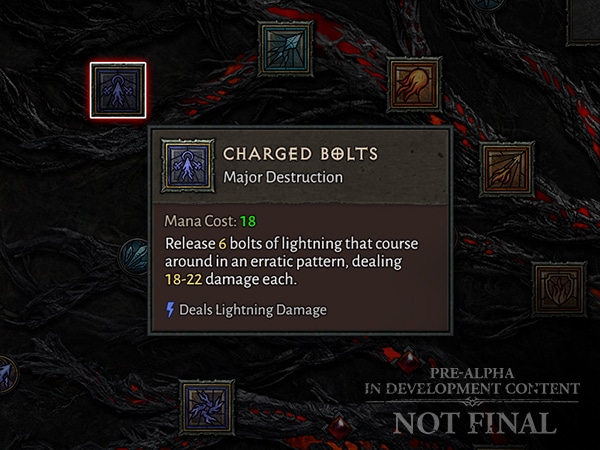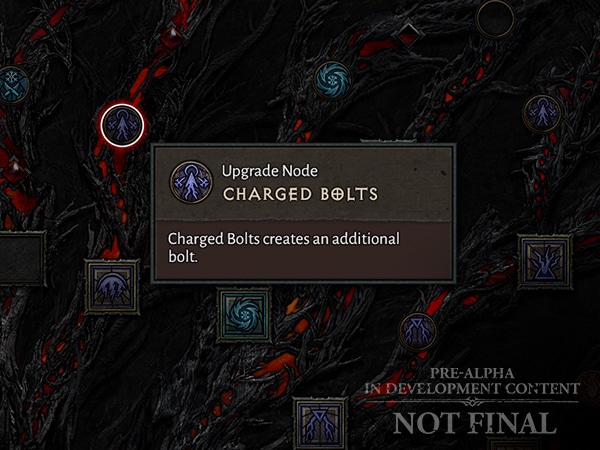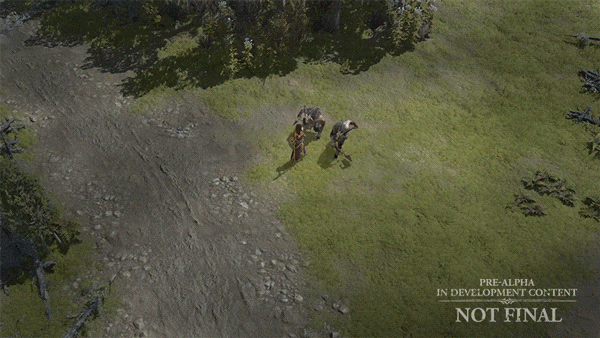To the Diablo Community,
Hello, and welcome to a new installment of our quarterly Diablo IV developer updates. We enjoyed hearing your thoughts on our last blog and have followed many of the discussions it kicked off within the community. It’s very encouraging for us to hear that you appreciate the steady update cadence and the behind-the-scenes looks at our early work. We’re also excited by all the positive reactions we’re seeing to the art, cinematics, and the addition of open-world gameplay to the Diablo franchise. The team has pored over a lot of constructive feedback regarding the current direction of itemization, and we’re looking to give you an update on items later in the year. Some of the progress we’ve made will speak directly to the questions we’ve seen raised in the community, so stay tuned!
I couldn’t be more excited to share the details in today’s update! Our Lead Systems Designer, David Kim, will take us on a deep dive into the ins and outs of the new Skills and Talent systems. We are currently playtesting the new systems, and the early feedback is super promising. I hope you enjoy it, and as always, we’ll be following conversations on our forums as well as other community sites.
Thank you for all your continued feedback and support in this journey as we make the game.
-Luis Barriga,
Game Director, Diablo IV
Skills & Talents
Today, we‘re going to look at skills and talents—a topic many of you have asked about. But first, a quick update on the things we’ve Shared in our previous development blogs.
Ancestral/Demonic/Angelic Powers
To begin, some of you let us know that the fantasy of Ancestral/Demonic/Angelic Power just isn’t cool enough in the current version of the pitch. Duly noted! Another problem we identified was the ratio of effort to rewards. For example, in order to gain specific, minor bonuses, players would most likely have to carry around several extra pieces of gear, each with different amounts of Ancestral/Demonic/Angelic Power on them. You would then need to constantly calculate each of the power levels of those items and compare with their overall power. It felt like an excessive amount of bookkeeping for the player.
However, one thing we really liked about the system was the gameplay of managing stats in meaningful ways to hit certain bonus thresholds that then make your items better suited for the playstyle you are going for. We need some more time for iteration/rework here and look forward to sharing more on itemization in our next quarterly blog.
Legendary Items
We are exploring some big changes in this space for two reasons:
1. We agree with the feedback that a character’s power is currently too dependent on items. We plan to put more of the player’s power back into the character to make build choices more impactful, rather than have the majority of player power coming from the items they have equipped. That said, it’s important that we strike the right balance so that itemization choices always feel meaningful.
2. We’ve also had very mixed team feedback regarding core itemization. We’re currently looking at how to best differentiate our various item qualities. For example, should Magic quality items have higher affix stats than Rare items?
You can expect to hear more about legendary items in our next blog.
New Skill System
As Luis mentioned, we have made some major changes to Diablo IV’s Skills and Talent systems. We’ve been reading through a lot of the comments from the community and agree that the Talent system needs more depth. Similarly, Skill system progression felt too simple, which created issues where a player would have no meaningful reason to spend their skill points. With this valuable feedback in mind, we’ve have been iterating on a new Skill System.
As you can see from the screenshot below, we have separate sections for Skills and Passives in our freshly painted Skill Tree. Take a look:
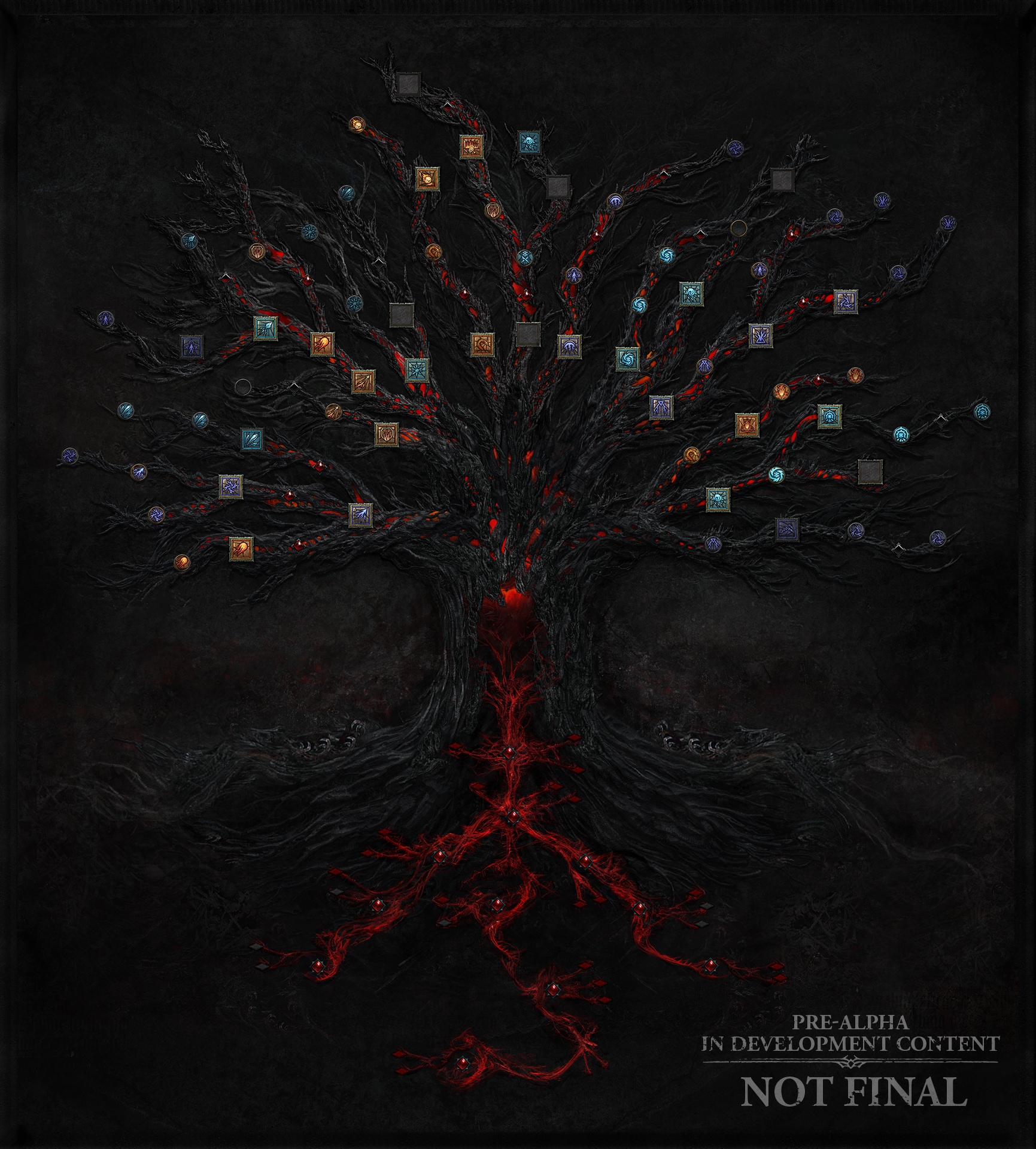
The Sorceress skill tree. The branches contain skills and skill upgrades, while the roots contain powerful passive effects.
The upper Skills section is where you will spend the Skill Points that you earn by leveling up. Here, you unlock brand new skills, unlock additional functionality for these skills, and unlock Passive Points that you can then spend on the lower Passive section of the tree.
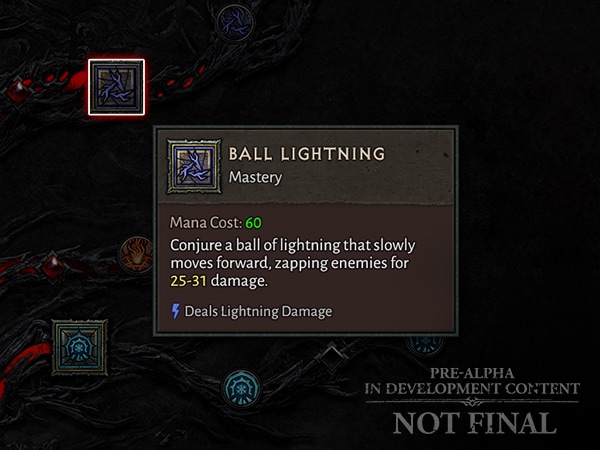
You can spend skill points on square nodes to unlock new active skills for your character.
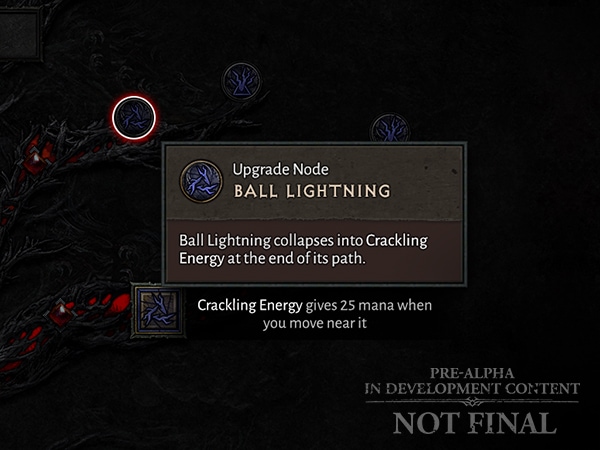
Spend points on circular upgrade nodes to enhance active skills you've unlocked.
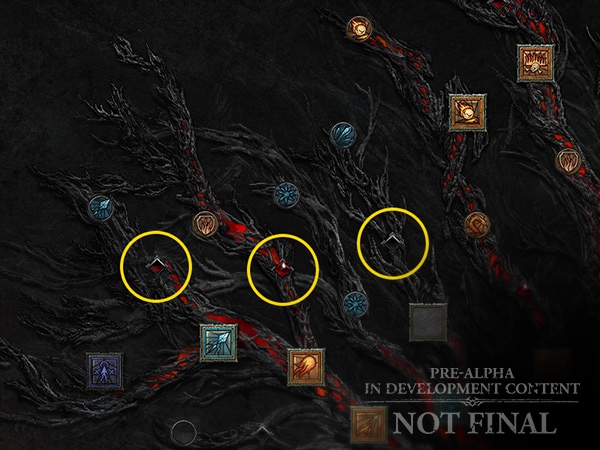
As you explore the branches of the tree, you will find passive points.
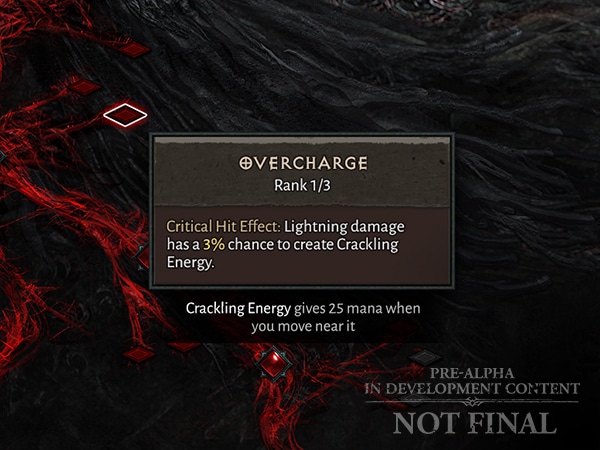
You can spend passive points in the roots of the tree to unlock powerful effects.
The Skill Tree you see above consists of many specific nodes, a sample of which you can see in the screenshots above. If we imagine every single node on that massive Skill Tree affecting different skills in different ways, the path that you decide to take will determine big power increases and playstyle choices.
The Passive part of this system is where you will find more general upgrades to your character. These effects are not specific to particular skills. Therefore, the Skill Tree will have a good mix of all types of different choices for players to make.
One last thing we want to point out is that players will not be able to acquire every Skill Tree node. We’re currently aiming for 30~40% of the nodes filled in for end game, so that players can have very distinct, and different ways they build out their character.
Sorceress Enchantment System
Many of you might remember the Barbarian’s unique Arsenal system—their ability to carry and smoothly swap between multiple deadly weapons—which greatly increased their power. We’ve also been exploring unique class mechanics for our other classes. The main goal for us here is to have very unique class-specific mechanics in Diablo IV. We have this goal because Diablo is the kind of game where many players try out different builds or classes, especially during seasonal play. We believe that unique class mechanics with very different strengths and playstyles compared to other classes will make exploring the different classes—and playing the game—much more fun.
For the Sorceress, we’ve been trying out the Enchantment System. This is how it works:
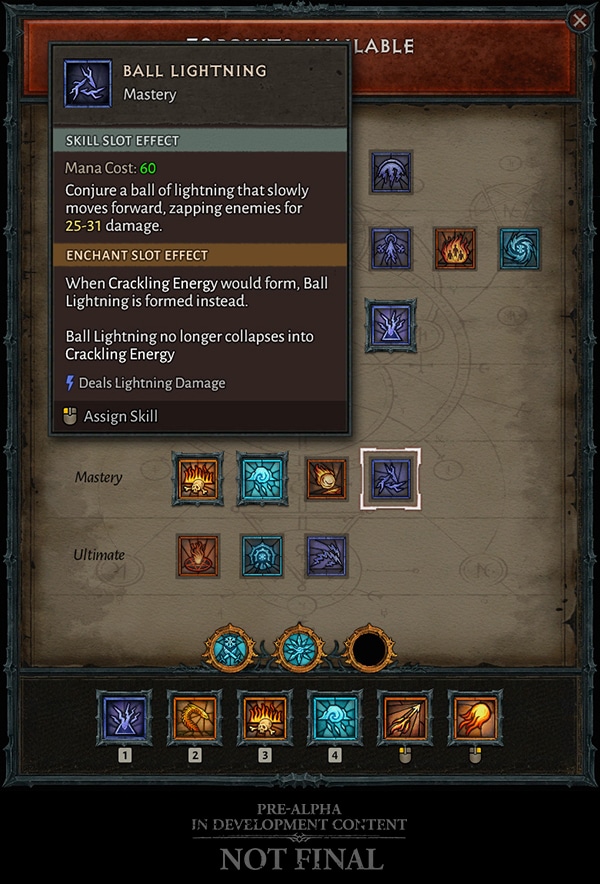
The Ball Lightning skill. Unlike other classes, each Sorceress skill has two possible effects.
Sorceress skills can be placed into two locations: an active skill slot (that every other class also has access to), and an Enchantment slot. If you place a skill in the Enchantment slot, you can no longer use it as an active skill, but your character instead gains a secondary bonus power.
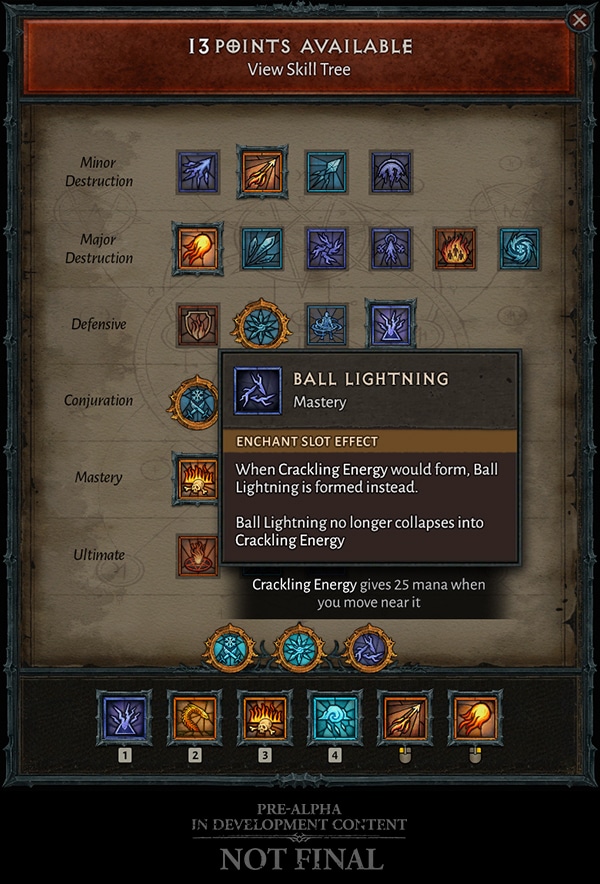
Ball Lightning as an enchantment. You can gain the secondary effect of a skill by placing it in an Enchantment slot instead of an active skill slot.
The power you gain from Enchantments is extremely significant, and you can currently make builds based around your Enchantments, your active skills, or a mix of both.
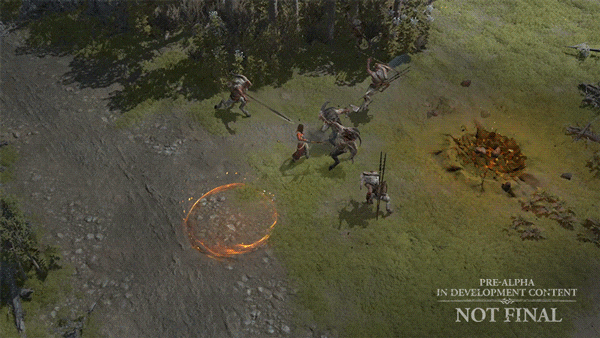
Here is an example of this system using the Meteor skill. Meteor allows you to call a fiery chunk of rock from the sky. If you choose to slot it as an Enchantment, you won’t be able to control your Meteors, but they’ll fall onto enemies periodically. This skill is still under development and may be different in the final game.
We’ve been testing this class mechanic for a while now, and the team feedback has been really positive. This new system now empowers you to make some interesting choices to strategize around which skills you would want to slot in as an Enchantment, as you won’t be able to put one skill in both places.
We are also exploring a Druid-specific class mechanic as well, and we’ll have more information on that to share in the future.
End Game Progression System
Lastly, we have been hard at work on our end game character progression system. This important feature is going to take a little more time (it won’t be in the next blog), but we wanted to mention it here because it will be the other significant source of power that comes from your class. This system is intended to provide more depth and replayability than what Paragon currently offers in Diablo III. We, and many Blizzard gamers, have talked about the concept of “easy to learn, difficult to master.” We believe that the end game progression system is where the difficult to master component will come in, and should meet the expectations of the most hardcore Diablo players out there.
We are excited to read through the feedback from the community regarding our revamped Skill and Talent system as well as our new Sorceress Enchantment system. We are always reading through the comments on our forums, Reddit, social media, and more for your feedback. As always, please remember that none of this is final as the game is still actively in development. Your constructive discussions around these features will help Diablo IV’s development the most, and we greatly appreciate all your continued support and discussion related to the game.
We will see you all in our next quarterly update as we dive deeper into some of the itemization changes that we have coming. Thanks again!
-David Kim,
Lead System Designer, Diablo IV
